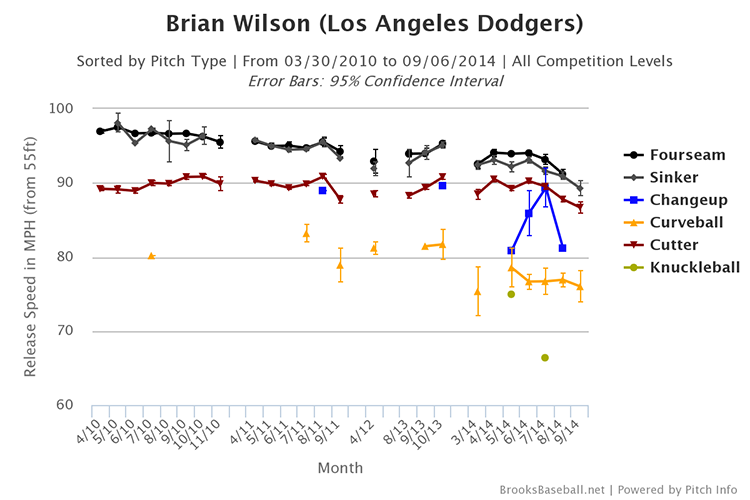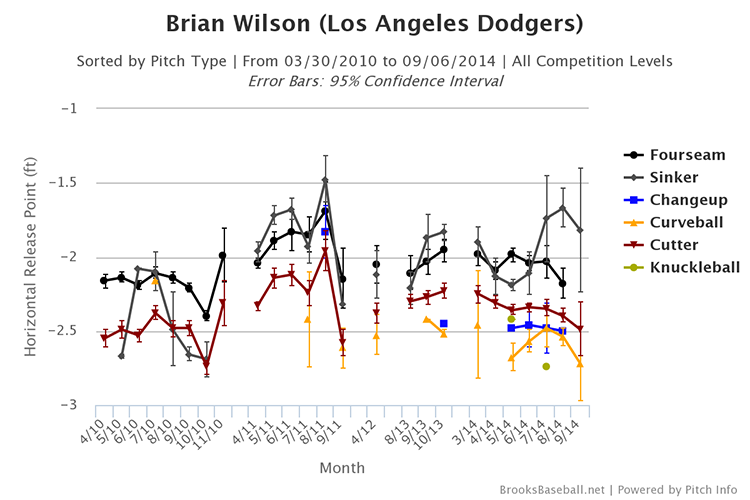When Brian Wilson went on the disabled list for elbow issues in April, one of the curious things was that his velocity was more or less fine. In April, he was throwing his fastball and sinker around 94 and 93 respectively, and his cutter was in the low 90s. These numbers were down just a little bit from his career levels, but not by an unreasonable amount given his age.
However, last night, Wilson was topping out around 90. That led to a search of Brooks Baseball, which revealed the following:
Yikes. Wilson’s velocity has been on a steep downward trend for most of the season. In April, Wilson’s four seam fastball was averaging 94.2 mph. He hasn’t thrown the pitch in September, but in August it was averaging 91. His sinker has gone from 93.2 mph average to 89.3 mph average. His cutter, which he throws more than half of the time, has gone from 90.6 mph to 86.7 mph. Wilson has lost four miles per hour velocity average across all of his hard stuff this season alone.
Trying to figure out what this means is a challenge, though. Wilson has been pitching fairly well since May or so, and he’s still striking out 11 batters per nine. His walk rate is still way too high, but that hasn’t changed as the velocity has dropped. The only instantaneous effect that was visible is this: since August 12th, Wilson has thrown 107 pitches and has induced just three swinging strikes. Of course, that’s slicing up things into a really tiny sample; Don Mattingly is using Wilson in tandem with J.P. Howell lately, so that nearly month-long period is just five innings pitched. Before the recent arbitrary endpoint period, Wilson’s swinging strike rate was still lower than usual, but it hadn’t really decreased at the same rate as his velocity.
One other symptom of whatever is happening is that Wilson’s horizontal release point is drifting as well:
It’s pretty odd to see Wilson’s sinker and cutter move in different directions like that. It could signal some inconsistencies in arm slot, though the standard of deviation of release points on all of his pitches are pretty much consistent with career levels. The big difference in release points could also make it easier for batters to identify the pitches coming out of his hand.
Unfortunately, determining a cause for these changes is difficult. Wilson’s elbow could very well still be bothering him. The data is more convincing of a potential problem now than it was when he was actually on the disabled list. It could also be just fatigue, after all this is Wilson’s longest season since 2011. No matter the cause, it is important that these changes do not impact Wilson down the stretch. In the absence of reliable relievers in the bullpen, Brian Wilson is going to be pitching in some extremely high leverage situations in the coming weeks. Hopefully he’ll be doing so at full strength.
 Dodgers Digest Los Angeles Dodgers Baseball Blog
Dodgers Digest Los Angeles Dodgers Baseball Blog

